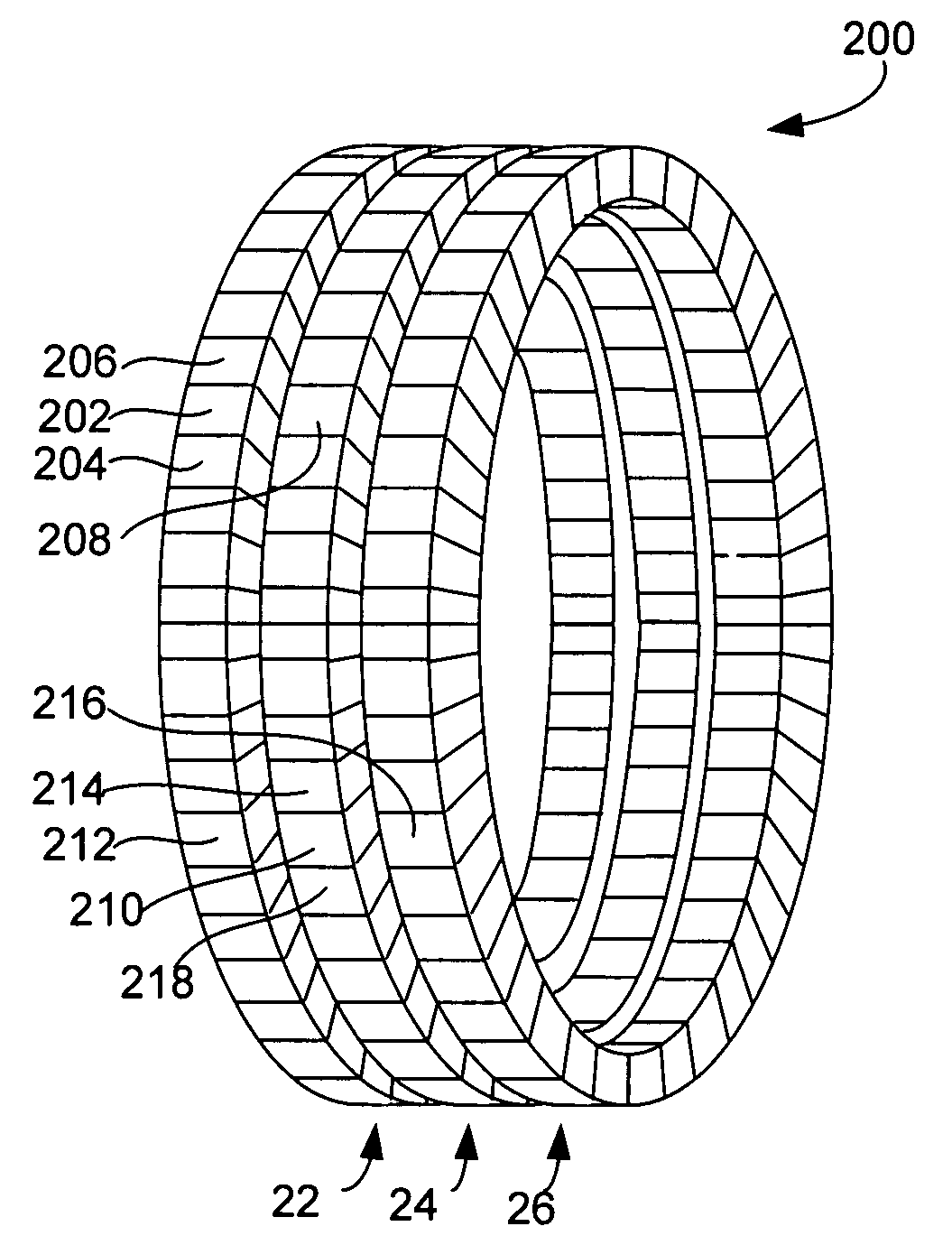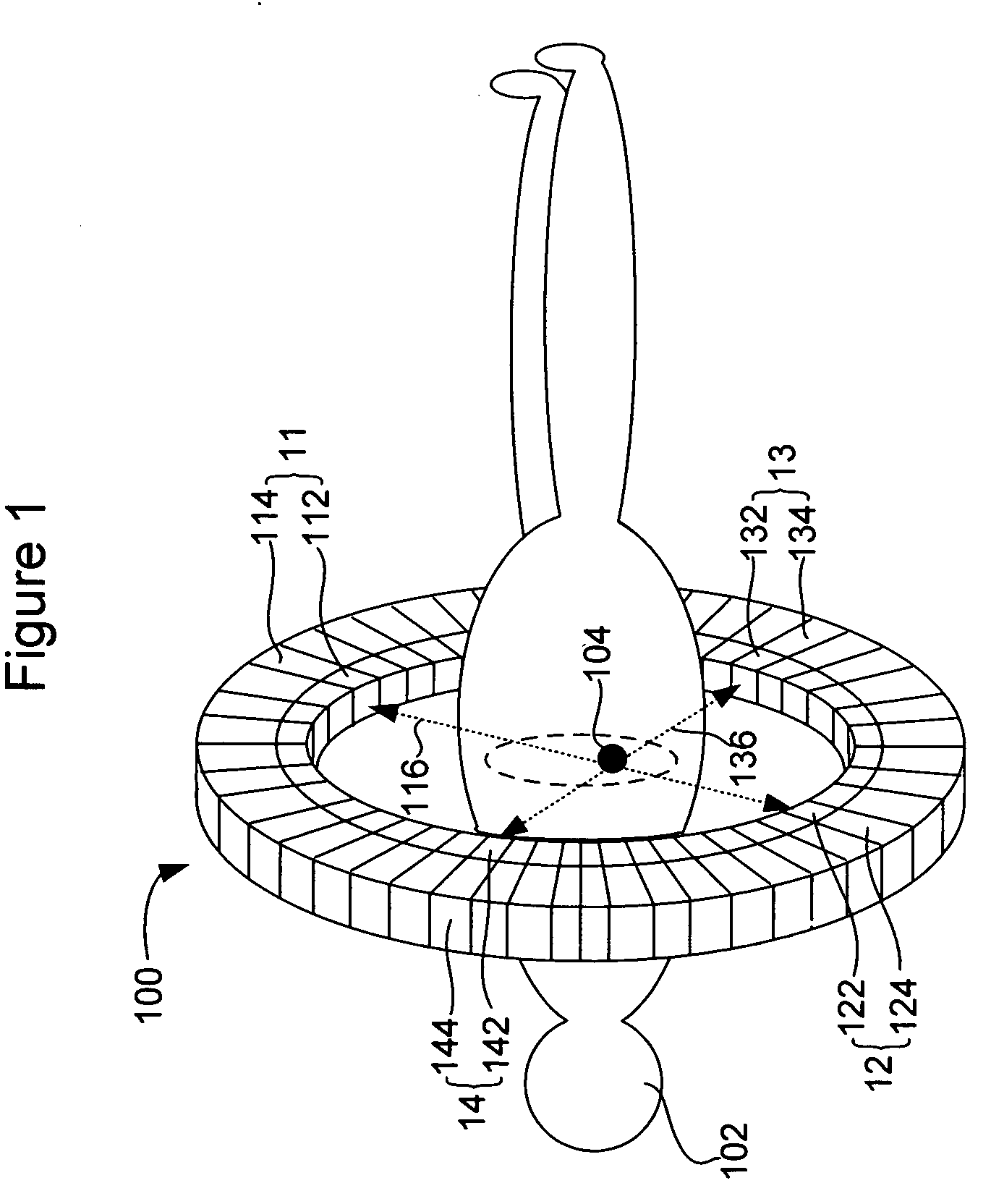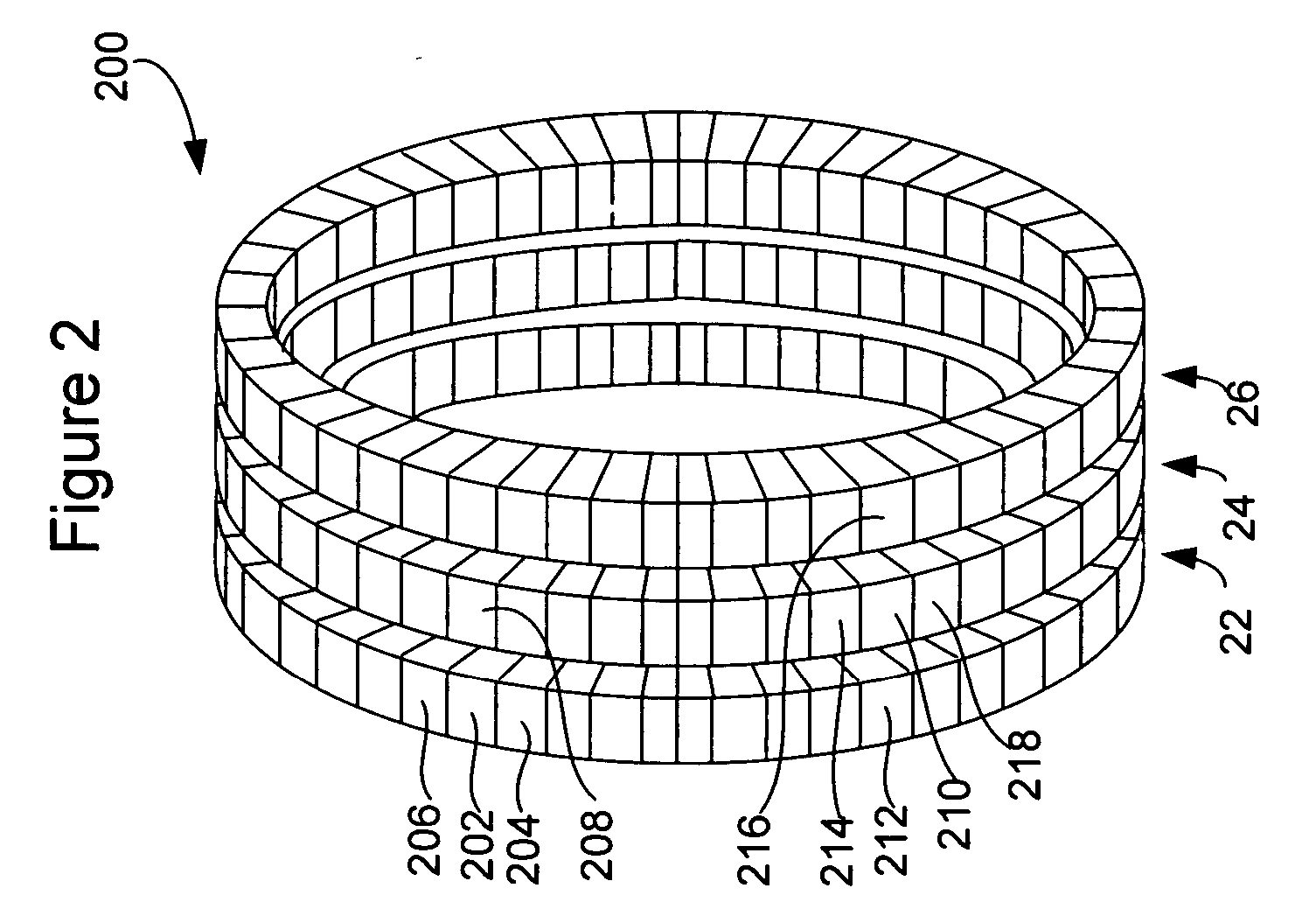Method and apparatus for timing calibration in a PET scanner
- Summary
- Abstract
- Description
- Claims
- Application Information
AI Technical Summary
Problems solved by technology
Method used
Image
Examples
Embodiment Construction
[0020] Reference will now be made in detail to exemplary embodiments of the invention, examples of which are illustrated in the accompanying drawings.
[0021] One technical effect of the invention is to provide a method and apparatus for timing calibration in a PET scanner, as set forth in the Brief Summary of the Invention, above and as more fully described here in the Detailed
DESCRIPTION OF THE INVENTION
[0022] Embodiments of the present invention may achieve timing calibration in a PET scanner without using any external radiation sources. Instead, timing drifts may be measured based on intrinsic radiation events in the scintillator blocks. For example, many high-speed scintillators for TOF PET contain lutetium (Lu), a naturally radioactive substance. FIG. 3 is a diagram illustrating the energy states involved in a lutetium beta decay. As shown, multiple gamma rays may be emitted when lutetium (176Lu) decays to hafnium (176Hf). The total energy of these gamma rays is 597 keV. Acco...
PUM
 Login to View More
Login to View More Abstract
Description
Claims
Application Information
 Login to View More
Login to View More - R&D
- Intellectual Property
- Life Sciences
- Materials
- Tech Scout
- Unparalleled Data Quality
- Higher Quality Content
- 60% Fewer Hallucinations
Browse by: Latest US Patents, China's latest patents, Technical Efficacy Thesaurus, Application Domain, Technology Topic, Popular Technical Reports.
© 2025 PatSnap. All rights reserved.Legal|Privacy policy|Modern Slavery Act Transparency Statement|Sitemap|About US| Contact US: help@patsnap.com



